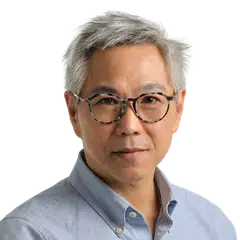Modest budget, grand ambitions: Taipei’s new $240m performing arts centre wants to be an ecosystem for the arts
Sign up now: Get ST's newsletters delivered to your inbox
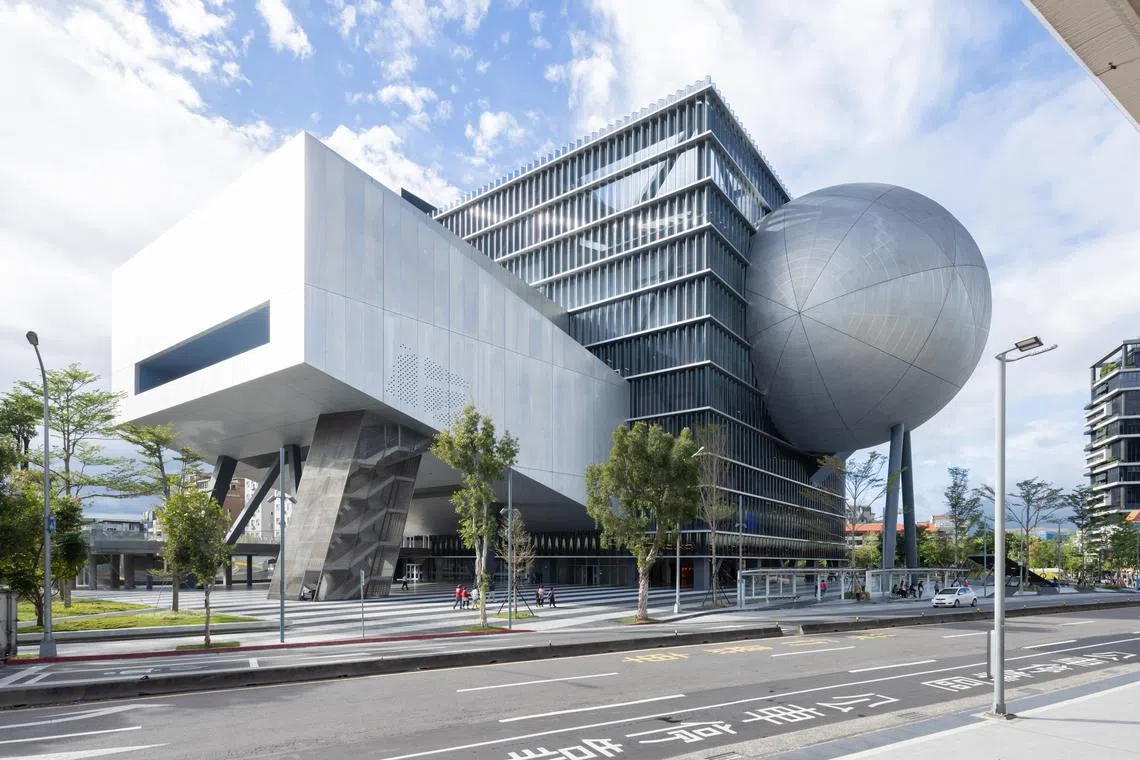
The Grand Theatre (left) and the spherical Globe Playhouse (right) are part of the the new Taipei Performing Arts Center in Taiwan, designed by international architectural firm OMA.
PHOTO: IWAN BAAN
Follow topic:
TAIPEI – The verdict on the new Taipei Performing Arts Center (TPAC) is still out, but it does already have a nickname – the “pidan doufu” (Chinese for century egg and tofu).
But love it or loathe it, the Taiwanese should be happy with the fact that the construction bill came up to only US$180 million, or about S$240 million.
In comparison, Singapore’s “durians” – the 60,000 sq m, 20-year-old Esplanade – Theatres by the Bay – cost $600 million, or $630 million if you count the new Singtel Waterfront Theatre extension that opened in October 2022.
The modest budget for TPAC, which opened to the public in August 2022, should not be sniffed at.
The 58,700 sq m, 11-storey building has three theatres with a total seating capacity of 3,100. It also has a flexible Super Theatre that can be created by combining two theatres to allow a maximum seating capacity of 2,550 seats and a variable linear stage 63m by 18m in size.
It is designed by international architectural firm Office for Metropolitan Architecture (OMA), which is behind architectural icons like the CCTV Headquarters in Beijing, China. In Singapore, it designed The Interlace condominium in Depot Road.
The design team was led by a pair of renowned Dutch architects, OMA founding partner Rem Koolhaas and managing partner David Gianotten.
Mr Gianotten, 49, says the original design brief called for only three theatres, adding: “TPAC is much more than three theatres for the same amount of money.
“OMA does not spend money if we don’t believe it brings something to the architecture, because in architecture, there is so much surface and space that is not used that costs an unbelievable amount of money.”
Members of the international media were invited to visit TPAC in March after Taiwan lifted strict Covid-19 travel restrictions.
What visitors will encounter are the many surfaces of the arts centre that are clad with aluminium panels and corrugated glass. Metal mesh is used liberally to screen off exposed structure and mechanical and electrical services. Some plasterboard walls are left unpainted and still have marks made during the construction process.
“(The marks) create a pattern. Why would we hide them?” says Mr Gianotten.
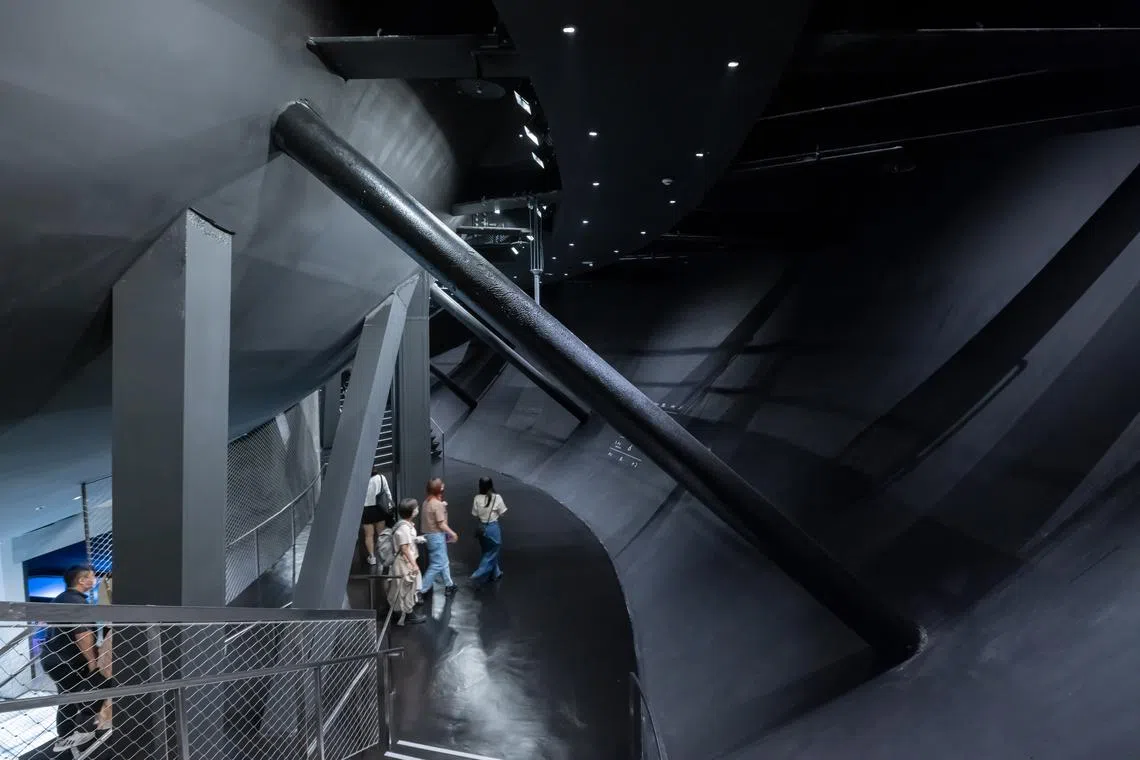
The public can get a glimpse of the exposed structure of the Globe Playhouse before entering the theatre at the new Taipei Performing Arts Center in Taiwan.
PHOTO: IWAN BAAN
There is a reception area with black marble flooring measuring just 19m by 11m in the main lobby, which is not lit by a chandelier but fluorescent tube lighting. The aesthetic is distinctly utilitarian.
Mr Koolhaas, who is a 2000 Pritzker Architecture Prize laureate, says: “We felt it very important that the (architectural) language be very democratic.”
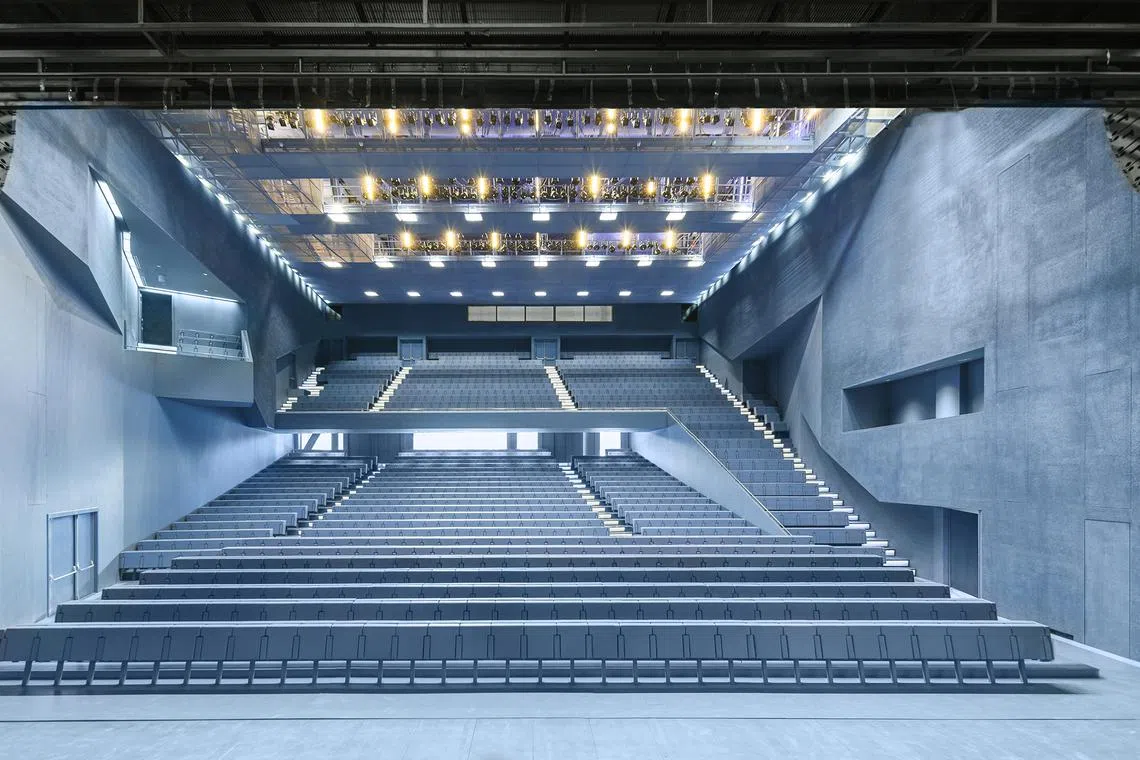
The Grand Theatre is one of three theatres at the new Taipei Performing Arts Center.
PHOTO: SHEPHOTOERD CO
The architectural forms are also very simple. TPAC is essentially a large cube with three theatres – the wedge (Grand Theatre), the sphere (Globe Playhouse) and the box (Blue Box) – attached to it.
“As a visitor, you need to be able to understand very quickly where you need to go. Keeping (the form) that simple made it very functional to read,” adds Mr Gianotten.

The Blue Box is one of three theatres at the new Taipei Performing Arts Center.
PHOTO: OMA
Architecture for the people
Beyond the surface quality of TPAC, the architects also had lofty ideals they hoped to imbue the arts centre with.
“For TPAC, it is part of the democratic motivation of the architect that there needs to be a way of participating in the building without paying anything,” says Mr Koolhaas, 78.
The site that TPAC sits on used to be where the Shilin Night Market operated between 2002 and 2012.
Ms Chiaju Lin, 47, OMA’s project director for TPAC, explains that it had always been considered a temporary site for the market. And since 2012, it has relocated to a permanent venue about 500m away.
Nevertheless, when OMA won the competition to design TPAC in 2008, the firm actually proposed to make the ground level of the arts centre the permanent location for the market, which had become a popular destination for street food.

An architectural drawing showing a section of the new Taipei Performing Arts Center in Taiwan by international architectural firm OMA that cuts through the Globe Playhouse (far right).
PHOTO: OMA
The design called for the theatres to be raised over the market.
“The challenge was how to mix high culture and street culture,” Ms Lin says. However, it was decided that the night market would move.
She does reveal that OMA has a “hidden agenda” for TPAC. The architects provided hidden electrical and water supply in the public area just in case the market is allowed to return one day.
Cultural and institutional buildings can look intimidating.
With TPAC, the ground plane has been largely left as an open public space.
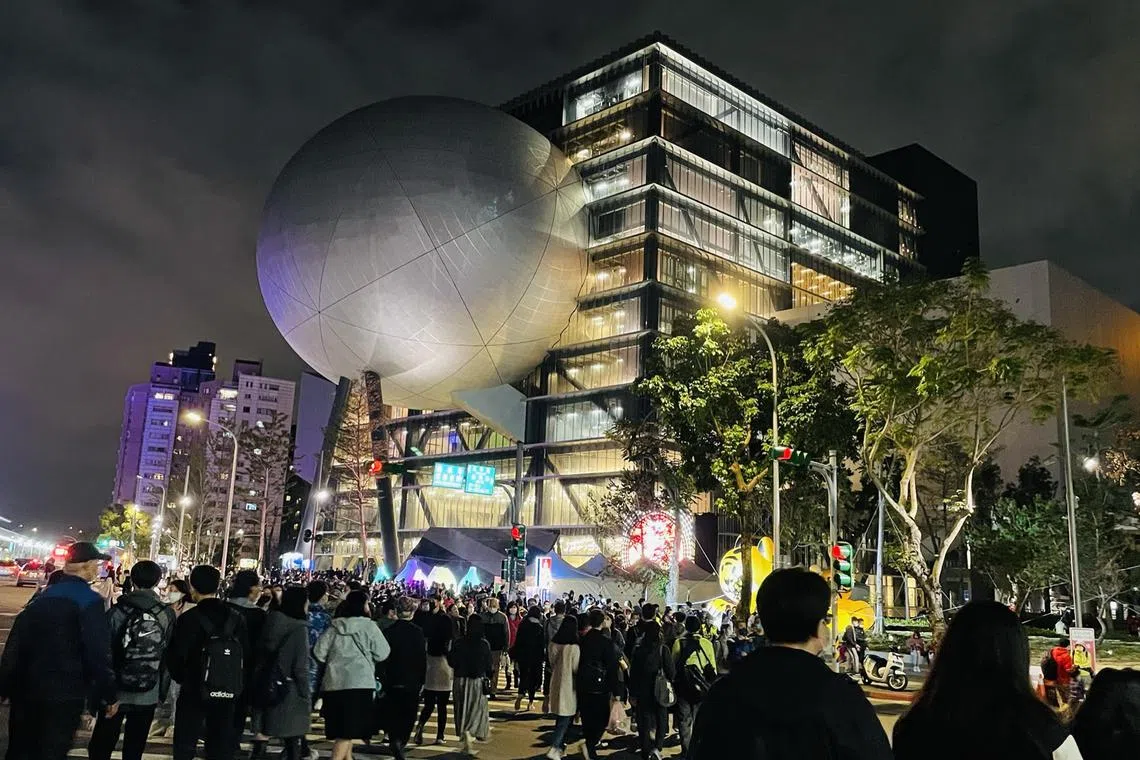
Night view of the protruding spherical Globe Playhouse, which is one of three theatres at the new Taipei Performing Arts Center.
PHOTO: OMA
There is no entrance in a traditional sense, no “threshold (to cross)”, says Mr Koolhaas, adding: “There is deliberate ambiguity where the arrival begins. The building is an open invitation.”
There is also the small Puppet Theatre in the public space that measures 5m by 5m and has a movable mechanism that can be unfolded to form a four-sided stage.
A machine for the arts
There is no mall at TPAC, but it does house a restaurant, bookstore and cafe, and is all about growing the arts and its appreciation.
TPAC chief executive officer Austin Wang, 65, says: “The building is a complete ecosystem for the arts.”
Space has been amply provided to workshop theatre productions, rehearse dance performances and encourage new forms of arts entertainment.
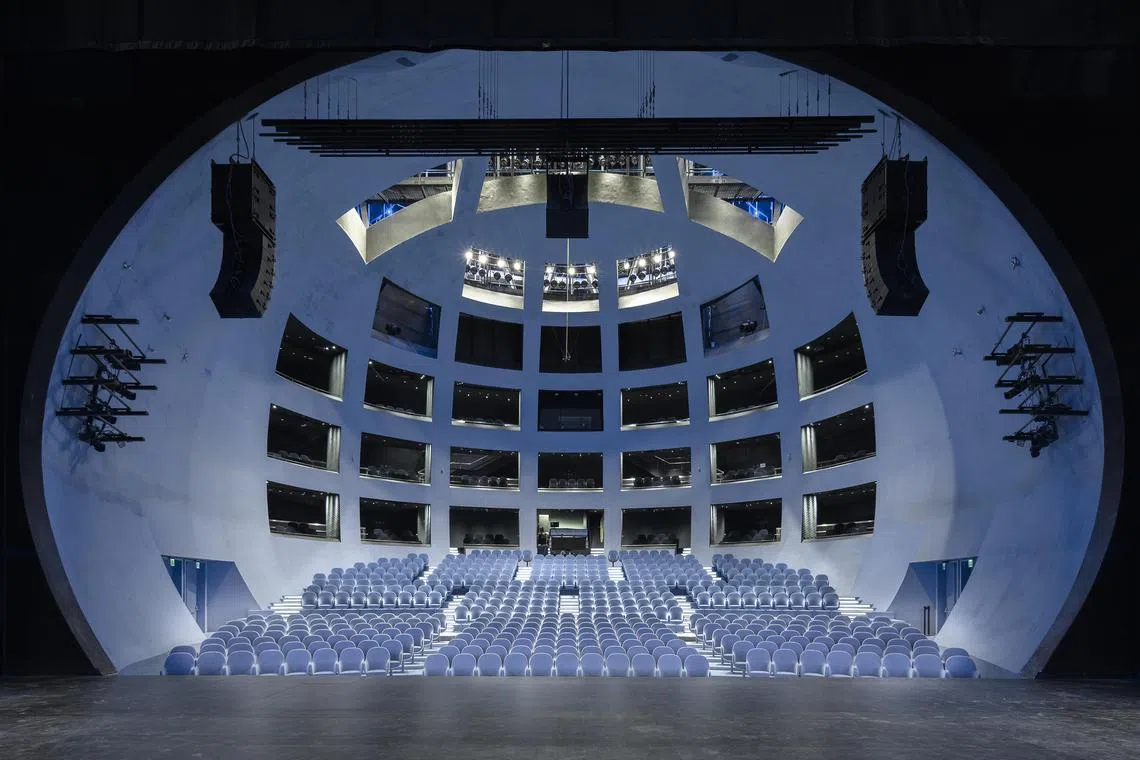
The Globe Playhouse is one of three theatres at the new Taipei Performing Arts Center.
PHOTO: SHEPHOTOERD CO
There are five rehearsal spaces located on the top floor and a large rehearsal room at the back of the stage of the Globe Playhouse which can also be combined with the stage when movable acoustic panels are removed.
Because of the facilities available, TPAC will not be just a venue, but will also develop its own shows. There are currently plans to develop hybrid theatre that will involve circus performers.
Mr Wang says it operates with just a third of the budget of the grander National Theater and Concert Hall in Taipei, but he is not too worried about TPAC’s bottom line.
“The government cares only about the number of people we engage. As long as TPAC generates enough footfall, they don’t care about our ticket sales. They don’t even care about controversial content.”
He reveals that one of TPAC’s upcoming highlights will be the opera Sun & Sea, which won the Golden Lion at the 2019 Venice Biennale and is set in an indoor beach.
“We will fill the stage with sand and get rid of all the seats,” adds Mr Wang.
To keep the ground plane free of vehicular traffic, the loading platform is on the second floor, accessible via a vehicular ramp.
From here, large trucks with shipping containers can drive into one of two large lifts that go up to as high as the seventh floor.
“We think of the building as a machine,” says Ms Lin.

The Super Theatre is created by combining the Grand Theatre and the Blue Box at the new Taipei Performing Arts Center.
PHOTO: SHEPHOTOERD CO
Mr Wang says that the large, flexible Super Theatre can be used for experimental and avant-garde performances that would otherwise have to be staged in large industrial spaces.
He also believes that the theatre will encourage new forms of performing arts in Taiwan. “The relationship (with the audience) will be hugely different,” he adds.
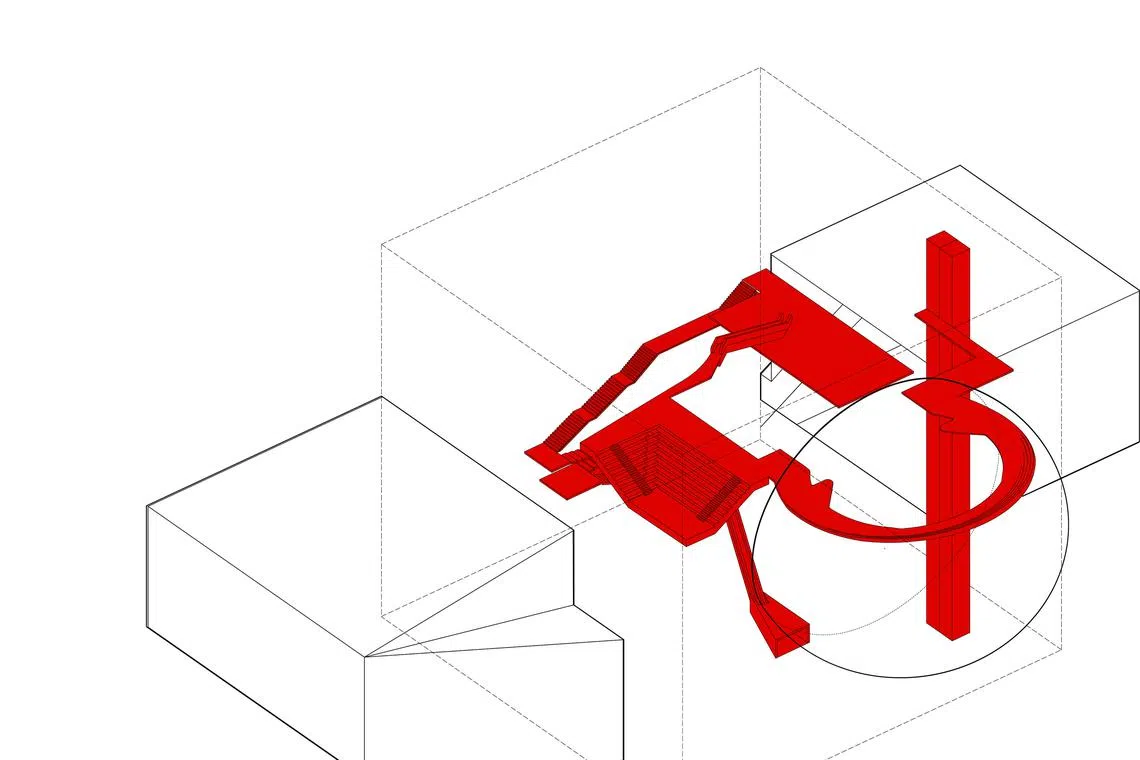
A diagram showing the Public Loop (in red) within the volume of the new Taipei Performing Arts Center.
PHOTO: OMA
At TPAC, there is also a circuitous corridor called the Public Loop that winds through the arts centre and allows the public to get a glimpse of shows and the action that happens backstage.
Its significance is heralded by the prominent location of the entrance to the loop – which is just off the central axis of the floor plan – and brilliant orange lighting.
“We want to promote, through the building, that art is a career,” says Mr Gianotten.
Architecture versus urbanism
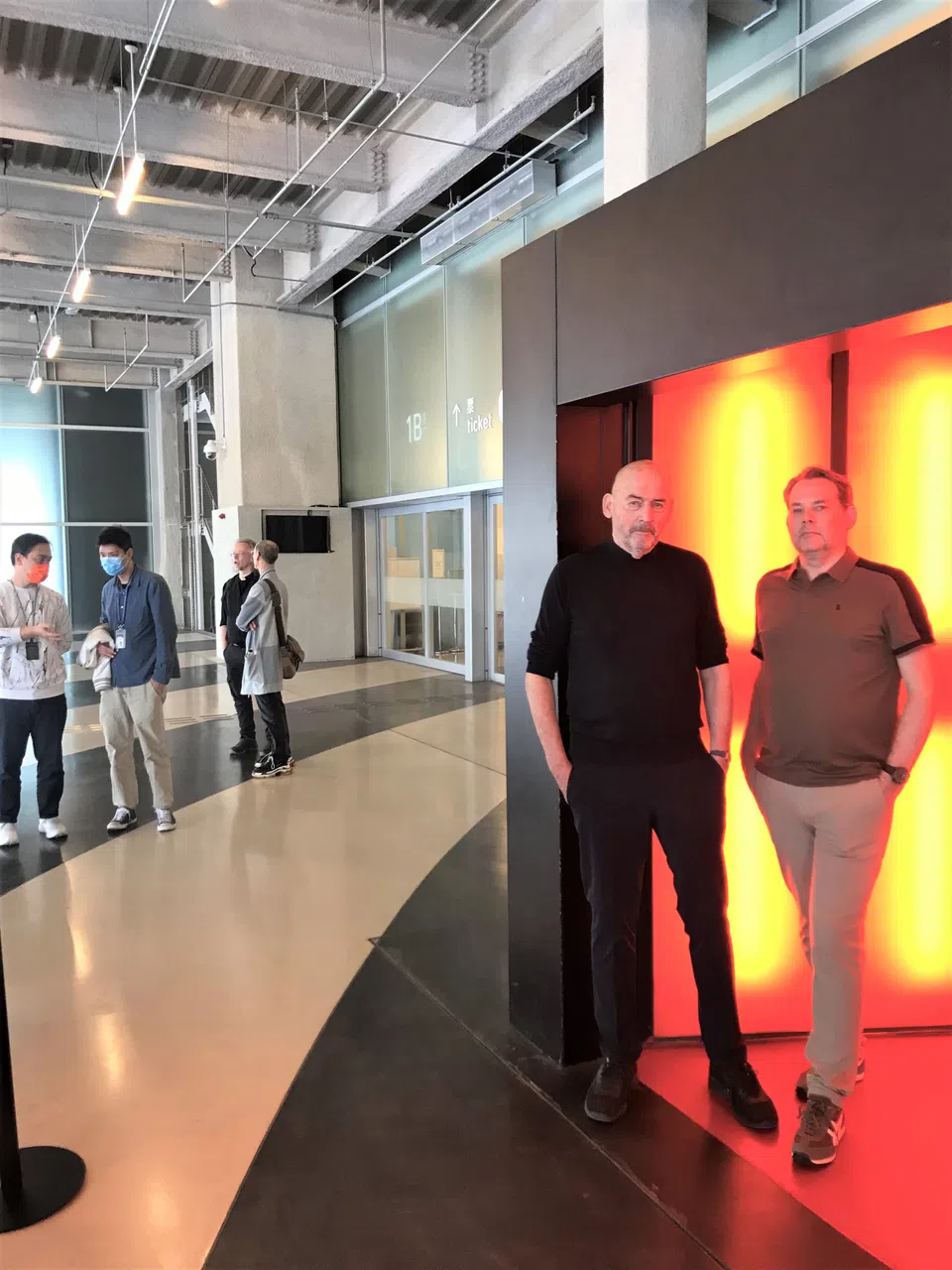
Architects Rem Koolhaas (left) and David Gianotten of OMA at the entrance to the Public Loop at the new Taipei Performing Arts Center in Taiwan.
ST PHOTO: ARTHUR SIM
Negotiating the site in the context of the city of Taipei is a key part of how TPAC was conceived. For Mr Koolhaas, urbanism has always been an important aspect of architecture.
“Urbanism generates possibilities and doesn’t exhaust them. Architecture exhausts possibilities,” he says.
Mr Koolhaas first came to the attention of the wider architectural community with the publication of his book on urbanism and architecture, Delirious New York: A Retroactive Manifesto For Manhattan (1978).
“From the very beginning, I felt there was a very interesting relationship – or maybe opposition is a better word – between urbanism and architecture.”
The urban context was also important in one of OMA’s early projects – an exhibition space, auditorium and restaurant called the Kunsthal in Rotterdam, the Netherlands, which was completed in 1992,
“The Kunsthal is a building that is intersected by two streets. It was an attempt to make architecture open, to crack architecture open almost, and let the flow of urbanism enter. In that sense, TPAC is similar.”
Urbanism, unlike architecture, is not a tangible entity, so it would be difficult or impossible for it to be defined as an icon. But this suits OMA.
“We hate the idea that we have to work with the motivation to make something iconic while there are so many other pressing urgencies that need to be prioritised. It was particularly interesting in TPAC’s case, to not be iconic, but be super functionalist, and nevertheless create a memorable image,” says Mr Koolhaas.
The writer was hosted by OMA.

